December 17th, 2022
7minute read
August 24, 1940, was a Saturday.
The Battle of Britain had been roaring in the skies over England for six long weeks.
Joachim-Marseille was 21 years old, little more than a souped-up child.
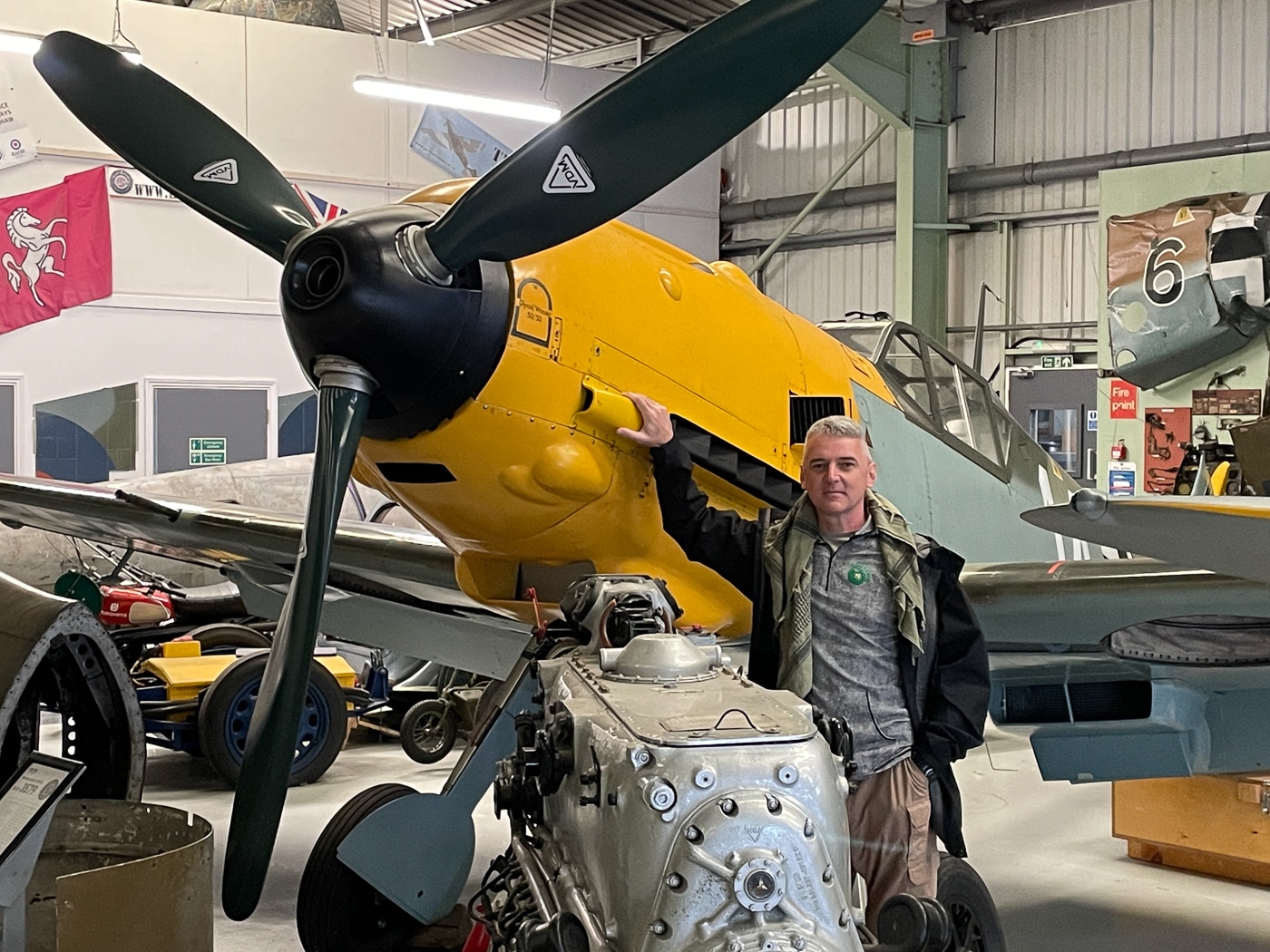
The author found being this close to Hans Joachim-Marseille’s Bf 109 E was an incredible experience. The plane looks factory new.
Of French Huguenot ancestry, the boy was the product of a difficult upbringing and a broken home.
Influenza had nearly killed him when he was young.
Joachim-Marseille went by Jochen to his friends.
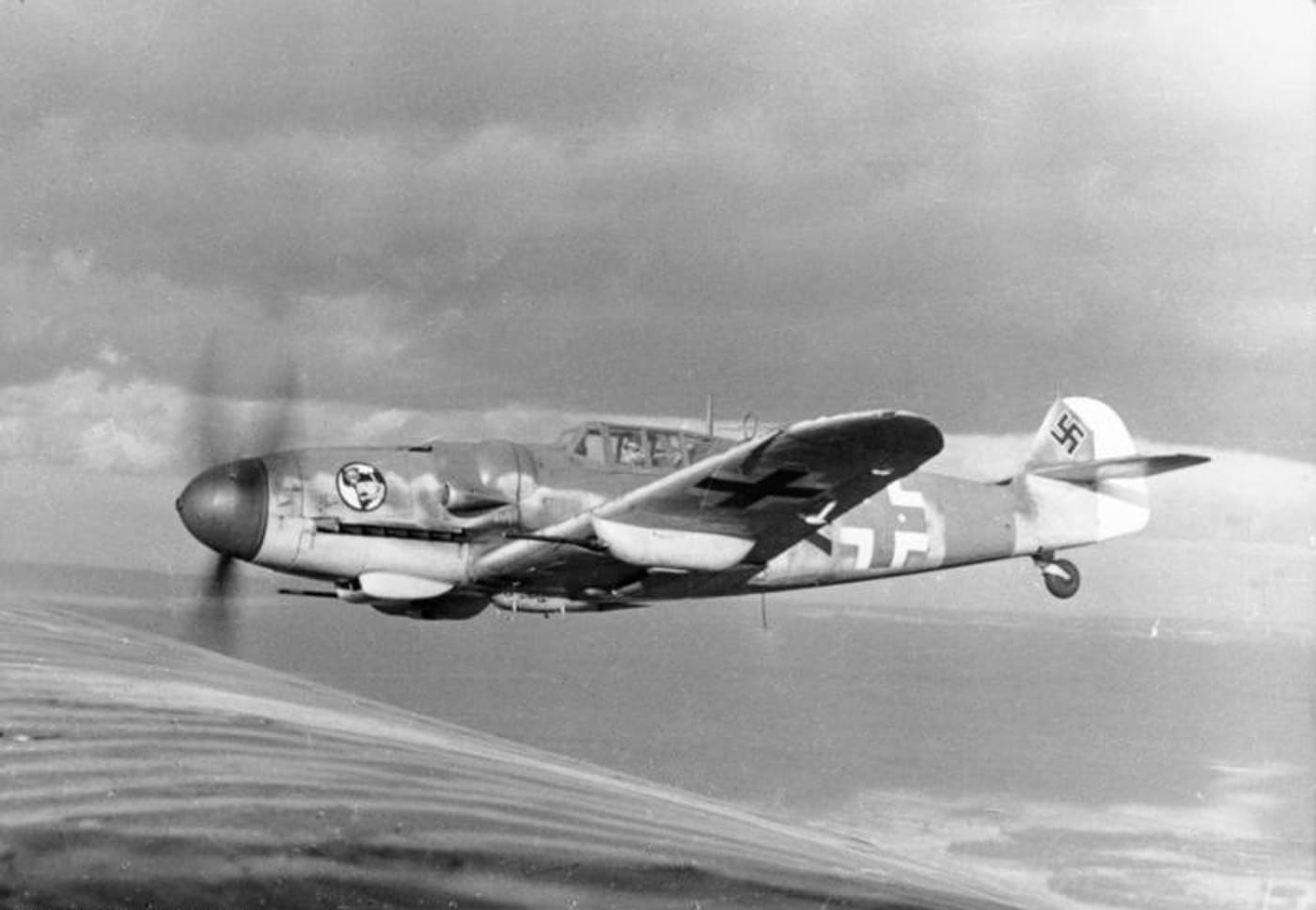
The Messerschmitt Bf 109 served the German Luftwaffe from the opening stages of World War II through the bitter end. It formally ended its military service in 1965. Photo: Bundesarchiv
Jochen completed fighter pilot school in Vienna in November of 1939.
In retrospect, young Jochen was likely trying to fill some kind of void with women and alcohol.
There were times he missed missions because of his excessive social pursuits the night before.
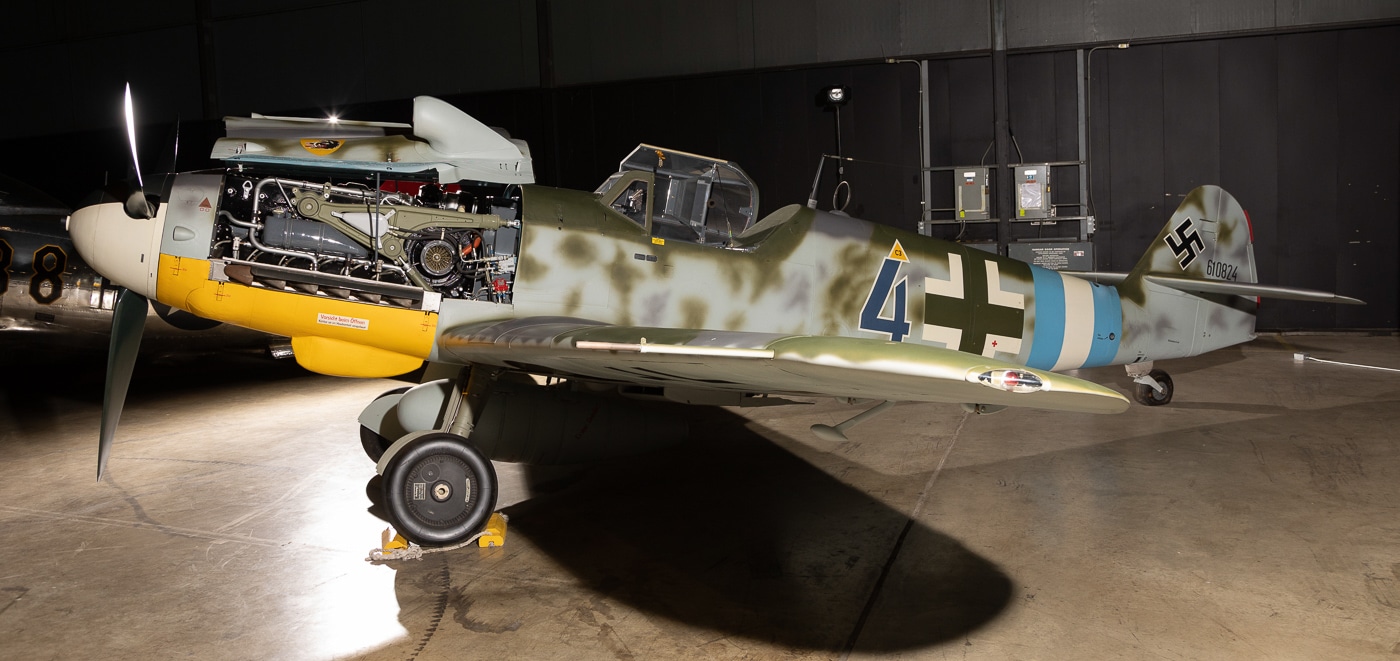
The Bf 109 G was, in the author’s opinion, arguably the prettiest combat aircraft of the war. The Germans had undeniable moral failings, but their airplane paint schemes were epic. Photo: USAF Museum
Fighter aircraft at the beginning of World War II were terrifyingly dangerous machines.
They were immensely powerful, but aviation technology had been advancing at a breakneck pace.
Most everything about combat aircraft of this era was still essentially experimental.
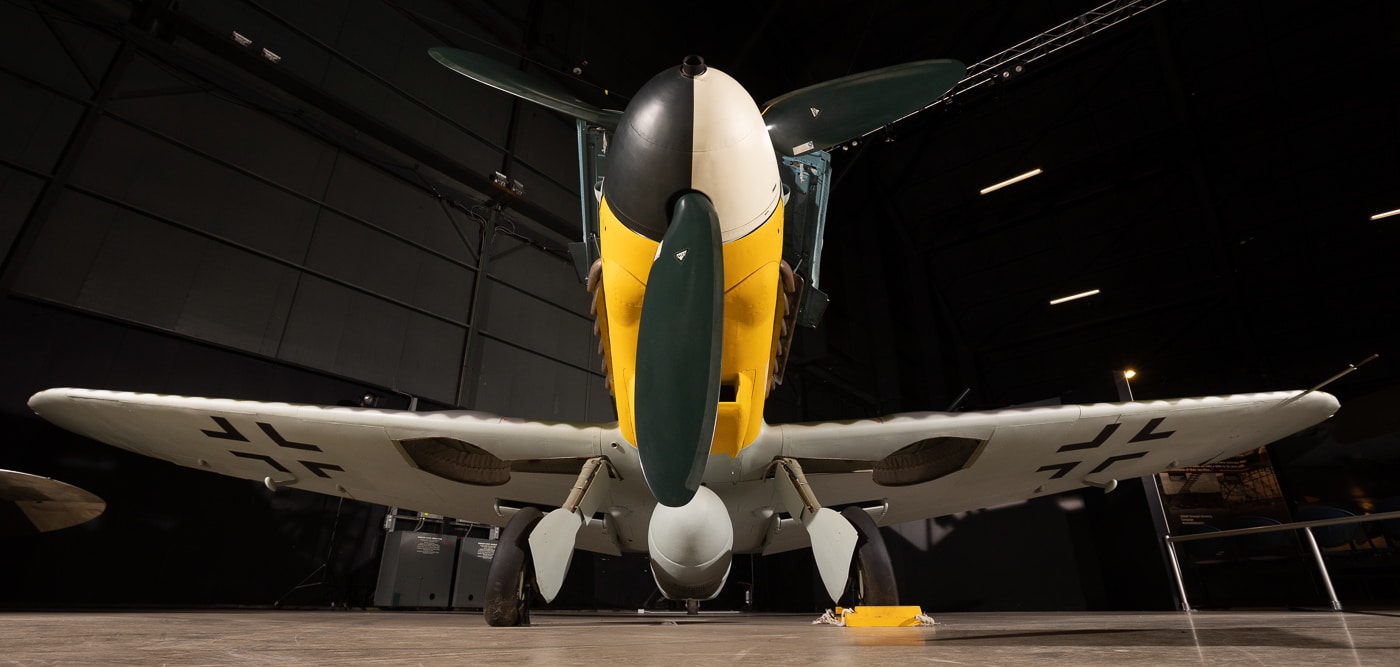
The understated elegance of World War II fighter planes cannot be denied. Photo: USAF Museum
As a result, young men strapped into these heavily-armed planes ready to meet death.
Fighter tactics were and are learned skills.
German pilots fought in pairs calledRotte.
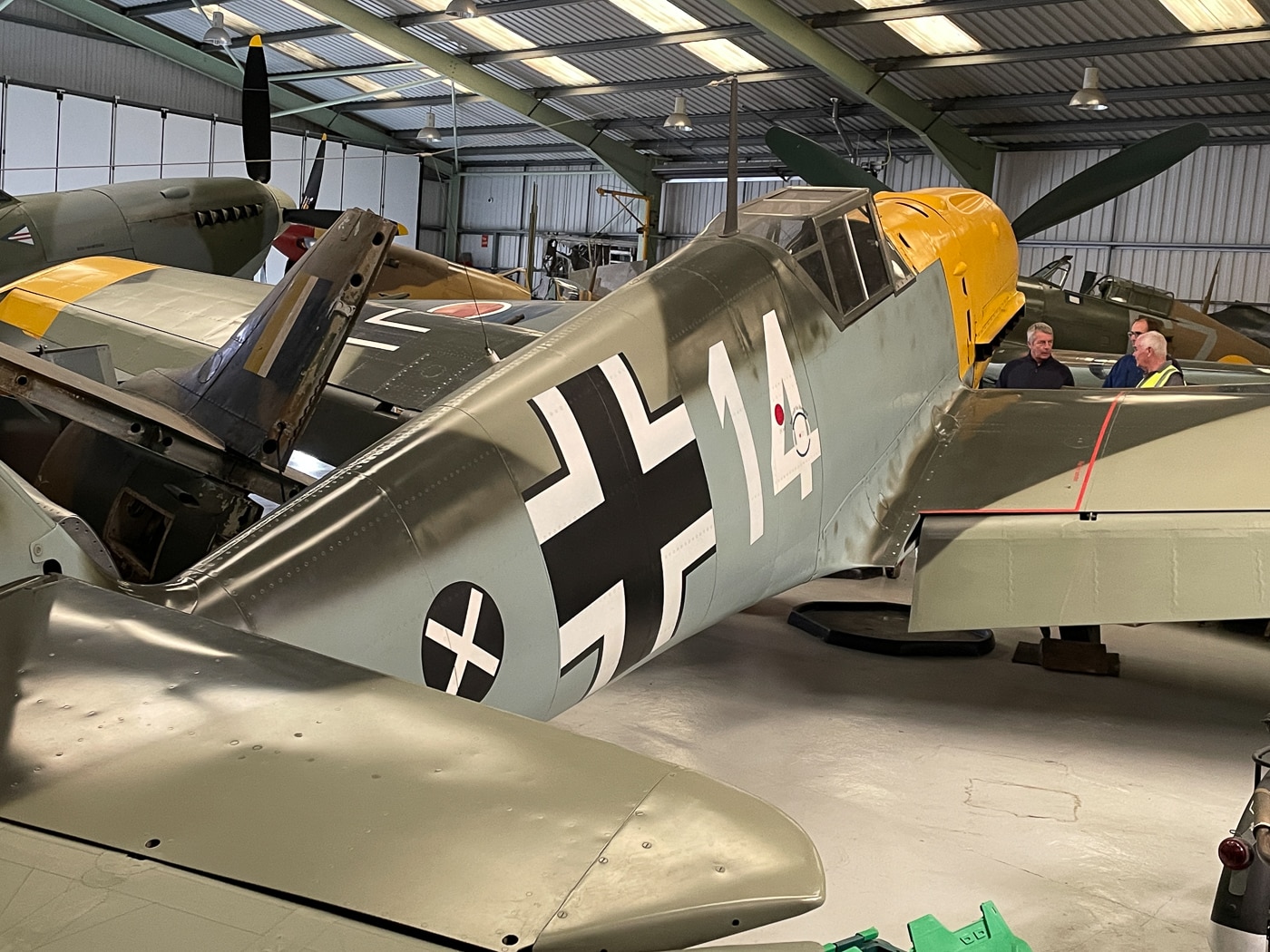
This plane was flown by famed Luftwaffe ace Hans Joachim-Marseille on his first combat sortie.
Two pairs operated as a four-plane unit called aSchwarm.
The lead pilot of theRottewas responsible for everything out front.
His wingman continuously cleared the rear to avoid an airborne ambush.

Although damaged in combat at least three times and abandoned for half a century in a Russian swamp, Hans Joachim-Marseille’s Bf 109 looks simply spectacular today.
It was beaten into combat pilots that you should never leave your wingman.
Joachim-Marseille had drawn Bf 109 E tail number 3579 for the mission that day.
The Emil as it was called by its crews represented the state-of-the-art in fighter aircraft at the time.
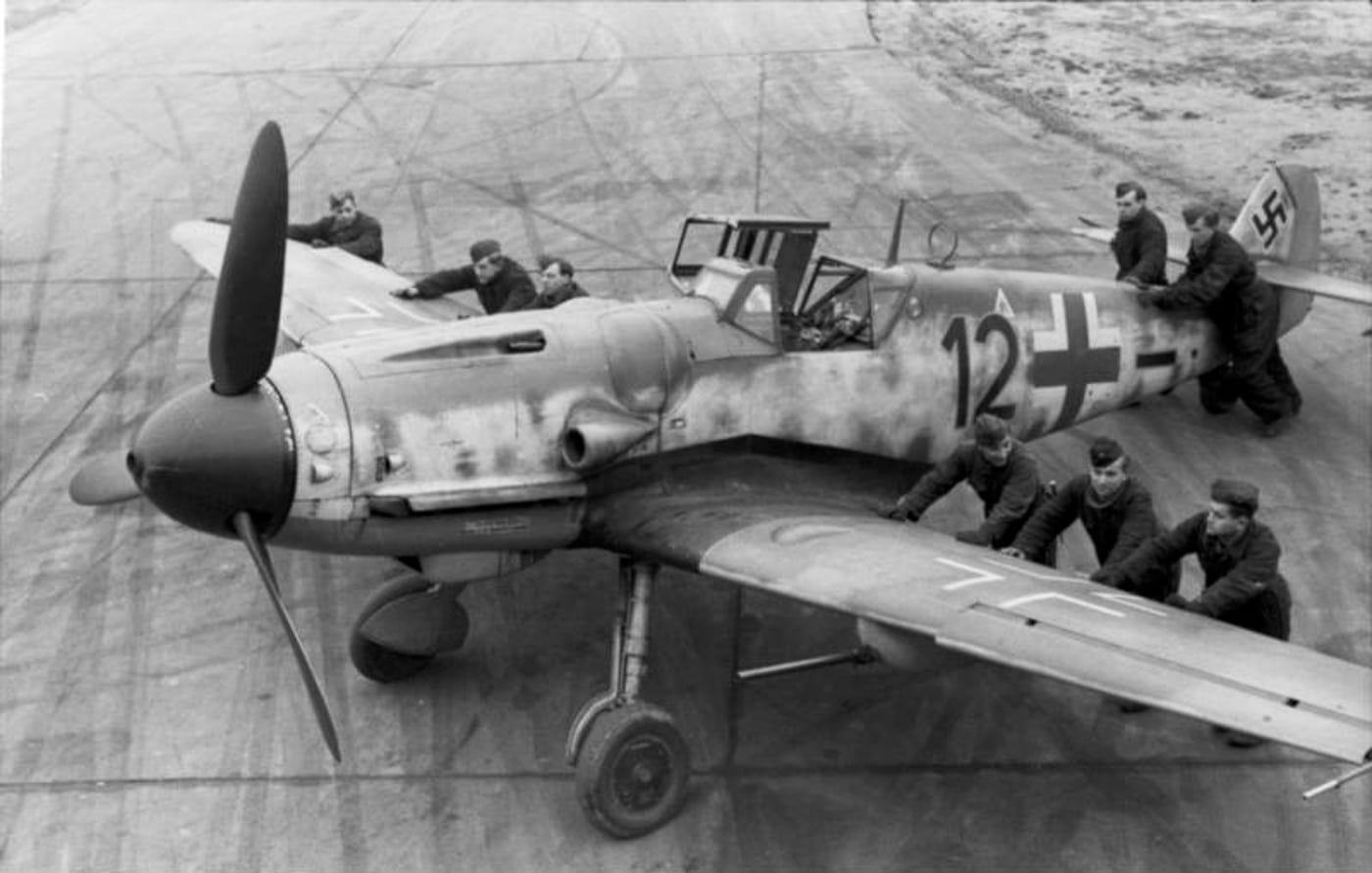
The G-model Bf 109 shown here was known as the “Hunchback” because of the bulbous covers for the twin 13mm guns mounted in the engine cowling. Photo: Bundesarchiv
Jochen firewalled the throttle, totally fixated on his target.
The enemy plane was aSupermarine Spitfire.
The battle lasted a mere four minutes, but four minutes is an eternity in aerial combat.

The narrow-track landing gear on the Bf 109 was one of the plane’s enduring weaknesses. A staggering number of planes were ground looped and lost to taxiing accidents.
This was a difficult maneuver in combat.
Successful air combat is all about energy management, and a chandelle left the plane relatively slow and disadvantaged.
In this case, however, Joachim-Marseille ended his turn at a greater altitude.
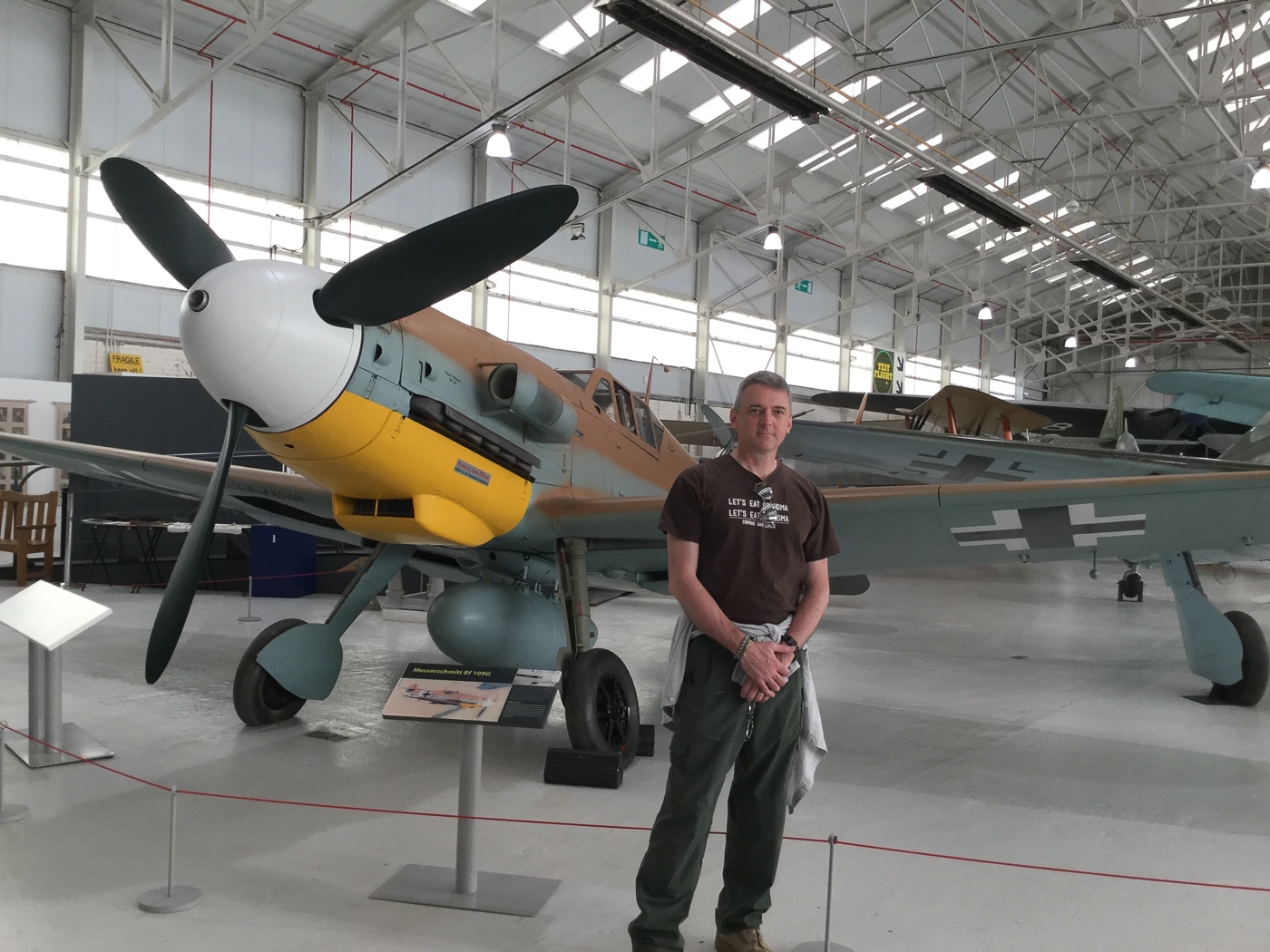
The Messerschmitt Bf 109 was a sleek and deadly war machine. The author is shown here with a Messerschmitt Bf 109 G.
He momentarily centered the British fighter in his REVI gunsight and squeezed the trigger.
He also carried a third 20mm firing through the propellor hub.
The combined firepower of these five guns chewed into the hapless Spitfire.
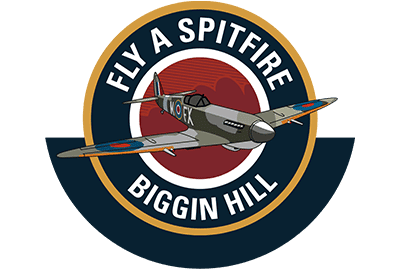
Joachim-Marseille was then bounced by a gaggle of Spitfires bent on revenge.
He dove his nimble Messerschmitt down to wavetop level and made a beeline for Calais and home.
Once on the ground he was severely castigated.
Though he had been successful, his lack of discipline in the air put his mates in jeopardy.
While there, he found his stride, ultimately shooting down 158 Allied planes.
All but seven of these were scored against the British Desert Air Force.
No other Luftwaffe pilot claimed as many Western aircraft downed.
All of his combat flying was in Bf 109s.
He was eventually awarded the Knights Cross with Oak Leaves, Swords, and Diamonds.
On September 30, 1942, Joachim-Marseille was flying a brand-new Bf 109 G-2 on aStuka escort mission.
His flight encountered no enemy aircraft, but Jochens engine began smoking on the return flight.
His wingmen guided him back to friendly lines so that he could bail out of the stricken plane.
Jochen rolled his Messerschmitt inverted per protocol and jettisoned his canopy.
However, the smoke apparently disoriented him such that he let the plane enter a steep dive.
He eventually cleared the aircraft at around 400 mph and struck the vertical stabilizer on exit.
The blow either killed him outright or rendered him unconscious and unable to activate his parachute.
Hans Joachim-Marseille was 22 at the time of his death.
The Plane
The German Bf 109 Messerschmitt was the most-produced combat aircraft in history.
Nearly 34,000 of them were built between 1937 and 1945.
The last Bf 109 variants were not retired from combat duty with the Spanish Air Force until 1965.
The Bf 109 incorporated a variety of radically advanced features.
The inverted-V Daimler-Benz engine was fuel injected, which rendered the plane immune to negative-G flight conditions.
The landing gear mounted to the fuselage.
This kept the wings thin and slippery.
It also made the wings easier to remove for servicing at the expense of an unusually narrow ground track.
An inordinate number of Bf 109s were lost to ground handling accidents as a result.
The Bf 109 advanced through a wide variety of upgrades that increased performance and enhanced armament.
The wreckage was recovered in the Summer of 1992 by the Russian Aircraft Recovery Group and moved to Moscow.
It was then purchased by an American company and rebuilt into flying condition.
In 2014 the plane was sold and moved to its current location at Biggin Hill Aerodrome outside London.
This priceless aircraft with its extraordinary connection to one of the Luftwaffes greatest fighter pilots is awe-inspiring up close.
The plane looks like it just rolled out of the factory and is frankly a thing of extraordinary beauty.
Special thanks towww.flyaspitfire.comfor the priceless opportunity to study it up close.
Go to forum thread




